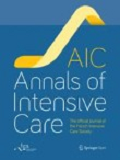
Authors: Tuanny Teixeira Pinheiro, Flávio Geraldo Rezende de Freitas, Karla Tuanny Fiorese Coimbra, Vanessa Marques Ferreira Mendez, Heloísa Baccaro Rossetti, Paulo Vinicius Talma, Antônio Tonete Bafi & Flávia Ribeiro Machado.
Abstract
Background: Active mobilization is not possible in patients under deep sedation and unable to follow commands. In this scenario, passive therapy is an interesting alternative. However, in patients with septic shock, passive mobilization may have risks related to increased oxygen consumption. Our objective was to evaluate the impact of passive mobilization on sublingual microcirculation and systemic hemodynamics in patients with septic shock.
Methods: We included patients who were older than 18 years, who presented with septic shock, and who were under sedation and mechanical ventilation. Passive exercise was applied for 20 min with 30 repetitions per minute. Systemic hemodynamic and microcirculatory variables were compared before (T0) and up to 10 min after (T1) passive exercise. p values <0.05 were considered significant.
Results: We included 35 patients (median age [IQR 25-75%]: 68 [49.0-78.0] years; mean (±SD) Simplified Acute Physiologic Score (SAPS) 3 score: 66.7 ± 12.1; median [IQR 25-75%] Sequential Organ Failure Assessment (SOFA) score: 9 [7.0-12.0]). After passive mobilization, there was a slight but significant increase in proportion of perfused vessels (PPV) (T0 [IQR 25-75%]: 78.2 [70.9-81.9%]; T1 [IQR 25-75%]: 80.0 [75.2-85.1] %; p = 0.029), without any change in other microcirculatory variables. There was a reduction in heart rate (HR) (T0 (mean ± SD): 95.6 ± 22.0 bpm; T1 (mean ± SD): 93.8 ± 22.0 bpm; p < 0.040) and body temperature (T0 (mean ± SD): 36.9 ± 1.1 °C; T1 (mean ± SD): 36.7 ± 1.2 °C; p < 0.002) with no change in other systemic hemodynamic variables. There was no significant correlation between PPV variation and HR (r = -0.010, p = 0.955), cardiac index (r = 0.218, p = 0.215) or mean arterial pressure (r = 0.276, p = 0.109) variation.
Conclusions: In patients with septic shock after the initial phase of hemodynamic resuscitation, passive exercise is not associated with relevant changes in sublingual microcirculation or systemic hemodynamics.
DOI: https://doi.org/10.1186/s13613-017-0318-x